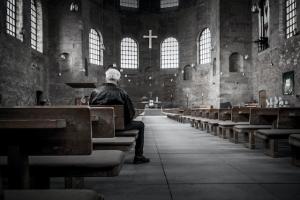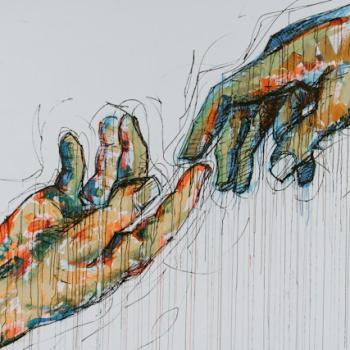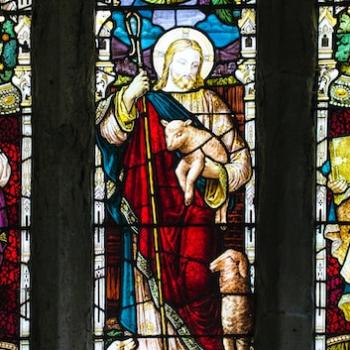The title of an opinion piece published this week by acclaimed New York Times columnist Nicholas Kristof says it all: “America Is Losing Religious Faith.” He discusses what’s known as the “great de-churching,” the current groundswell of people happy never to darken the doors of a church again.

Why the opinion piece? A book with that very title just hit bookstore shelves earlier this week: The Great Dechurching: Who’s Leaving, Why Are They Going, and What Will It Take to Bring Them Back? by Jim Davis and Michael Graham with Ryan P. Burge. It promises to be a page-turner.
By the Numbers
In the last 25 years, roughly 40 million Americans have stopped going to church. In the last 15 years alone, there are 15% fewer Americans who identify as Christian. During that same timeframe, the “nones,” those who claim no connection to organized religion, have increased by 13%.
I’ve been familiar with this data for some years now, but I’ll be honest. I haven’t yet read this specific book…although it’s on deck in my Kindle library. Therefore, I don’t yet know what strategies the authors suggest to “bring them back.” That’s okay—I have a few of my own. Let it never be said that I miss an opportunity to share my opinions without first studying those of experts. Ha.
Yes, the stats about the un-churched and de-churching are sobering. But I’m far more interested in what a “re-churched” church might look like. In my work with teenagers at an all-girls Catholic high school, I’ve learned that the best way to attack big, hairy adult problems is to forget about big, hairy adults and think about kids.
Three Things That Matter
There’s another book on my Kindle that I have actually read and even highlighted numerous passages in as though I were being paid by the neon word. It’s 3 Big Questions That Change Every Teenager: Making the Most of Your Conversations and Connections by Kara Powell and Brad M. Griffin. The authors conducted thousands of interviews with teenagers and identified their three main concerns in life: identity, belonging, and purpose.
I would argue that this particular holy trinity of who, where, and why is not limited to teenagers. Sure, that’s the age when we first grapple meaningfully with the questions they raise. But don’t we have to reassess who we are, where we fit, and what our purpose is many times over the course of our lives? Even those of us old enough to have teenage grandchildren aren’t exempt from the universal, magnetic pull that demands new answers to the big questions: who are you? where do you fit in? what’s your ultimate purpose?
Given this basic human need for identity, belonging, and purpose, what might a “re-churched” church—one committed to the gospel of Jesus alone—look like? How might it help us make sense of who we are, our place in the world, and why we’re even here in the first place—not just when we’re young but throughout our lives?
Identity
A re-churched church would have no doors. Not literally, of course. We can’t air condition the outdoors in the summer, and we need to keep the wildlife and mosquitos out of the sanctuary year-round. But the church is so much more than a building. It’s a community, the Body of Christ. In that sense, no one should be shut out. Jesus welcomed everyone—no exceptions. A re-churched church would have no doors.
But it would have breathtaking windows, ones that help us see the outside world with a kind of clarity that no corrective lenses we know of can approximate. They would look out on a world of complexity and pain with a kind of spiritually tempered glass that helps us see them as something other than punishment for our shortcomings or tests of our faith.
A re-churched church would leave all the judgment to God. Its doctrines and policies, then, would be a compass for us to use on the journey, not the GPS voice that tells us exactly what lane to be in and where to turn. Re-churched church teachings would provide guidance but encourage us to think for ourselves when the next steps forward require “recalculating.”
Belonging
Not only would a re-churched church have no doors, but it would also have no segregated seating. Of course, not racially segregated like it was in the past, but segregated in any way.
The folks who make different choices about how they vote or love or marry or re-marry or integrate their sexuality into who they know themselves to be all get a seat too. A good one. Same as the ex-con and the con, the homeless person and the panhandler, the drag queen and the heroin addict. A re-churched church would invite them to sit in the pews with the best acoustics, clear sight lines to the altar, and easy access to the bathroom. They would not be relegated to the choir loft where it’s hot and stuffy and sometimes even smells bad.
A re-churched church would not run counter to science. On the contrary, it would help us interpret what we know from science in a way that adds meaning rather than subtracts it. A re-churched church would let us bring our whole selves to the community—body, mind, and spirit. And it would show us that when all is said and done, there is precious little difference between the three.
Purpose
A re-churched church would have no artwork depicting the “pearly gates.” Not literally, of course. For thousands of years, religious art has helped people visualize concepts related to faith in concrete terms. But the pearly gates as an artistic metaphor is one thing; teaching the faithful that there is a cloud-based, bleached-white celestial realm on the other side of death where we will be pretty much like we are now but just happier is quite another. The former may be useful; the latter may be theological malpractice.
A re-churched church would help people understand their role in an evolving universe, as a unique participant in the unfolding reality of God. It would not teach people that they are bad, that the “good stuff” is available only after we die, and that it’s reserved exclusively for those who pass the high-stakes AP Heaven exam. It would help us remember that the very fact that we are alive is the greatest of miracles and that we are not meant to be anything other than who we are.
A re-churched church would involve its members in service and charity. It would preach a gospel of love, mercy, and forgiveness. But it would do so not because the wrath of a distant God may be waiting on the other side but because service, charity, love, mercy, and forgiveness are ways we participate in the divine life itself while on Earth.
The Bottom Line
Interestingly, today’s gospel reading depicts Jesus asking his disciples who they think he is. Simon Peter answers, “‘You are the Messiah, the Son of the living God.’” Jesus responds saying, “‘And so I say to you, you are Peter, and upon this rock, I will build my church. (Matthew 16:16,18). What began in that story continues today. We are always called to “build my church.” But at its best, what could that church look like today?
In one sense, the title of Kristoff’s opinion piece is spot on. The data clearly show that for more and more Americans every year, organized religion has become superfluous. But it doesn’t have to be that way.
If only we could listen to the un-churched and de-churching—especially the young people who long for help discerning identity, belonging, and purpose in a complex and confounding world—we might find a way to re-church church in amazing new ways.

















